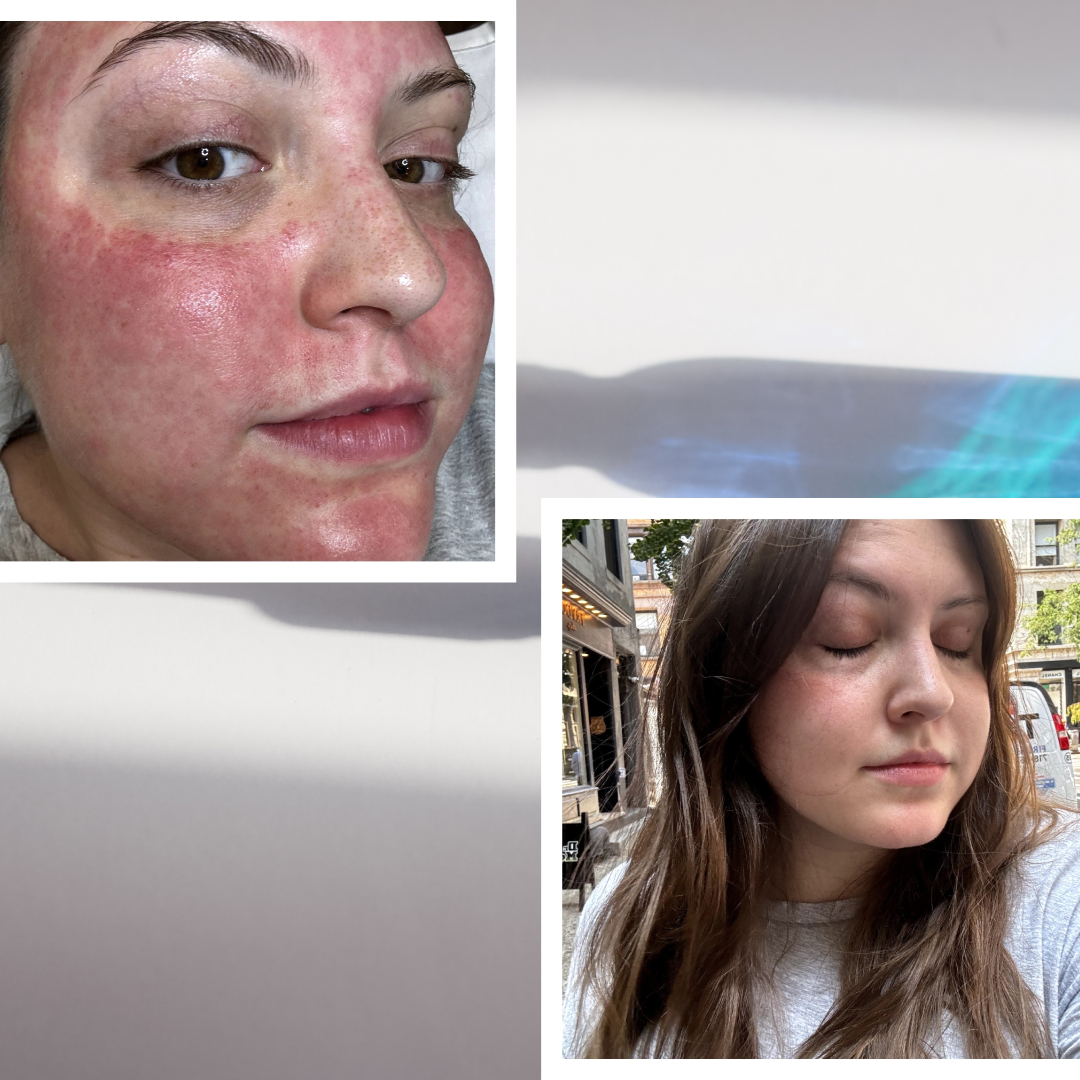
I almost got Botox for the first time last week, but I didn't! The reason? My physician's assistant told me that microneedling would be a better option for my 27-year-old skin. Also, let's face it: microneedles are a little less scary than syringes. While a professional treatment is the best way to try microneedling, at-home microneedling at home is also a viable option. When done correctly, benefits include better product absorption and the reduction of fine lines, age spots, and acne scarring. Skin is left glowing with improved tone and texture, which is all anyone can hope for, really.
Lisa Chevalier, physician associate and founder of SoVous Medical Spa and Laser Center in NYC, recommends in-office microneedling to nearly everyone (in fact, she's the very person who recommended it to me). While great on its own, it also complements the work of more invasive treatments. "Unlike laser and light-based treatments, microneedling is less photosensitizing, making it suitable for maintenance during sunny months or before traveling to sunny destinations for a collagen boost," she explains.
As for at-home microneedling? It can complement professional microneedling treatments and be incorporated into your skincare routine. However, its benefits are typically more modest compared to in-office procedures, which offer deeper penetration and more dramatic results. So, without further ado, let's get into it.
What Is Microneedling?
Microneedling is exactly what it sounds like: the process of using a bunch of tiny needles on your face. "Microneedling (in general) is a minimally invasive skin rejuvenation procedure that helps minimize the signs of aging, mend the appearance of acne scars and revitalize and rejuvenate aging skin," explains Dr. Jodi LoGerfo, DNP, APRN, FNP-BC. "Microneedling causes small micro-injuries in the skin that encourage the body’s own wound healing processes. In causing these micro-injuries, skin is remodeled of collagen and elastin."
Chevalier adds that professional microneedling utilizes a medical-grade device that penetrates the skin at deeper levels (up to 2.5 mm depending on the device). "This depth can target more severe skin issues like deep scars or wrinkles. The procedure is often combined with serums, protein-rich plasma, or growth factors to enhance results." Ultimately, microneedling sets the stage for dewy skin and an even complexion by boosting collagen production. It also helps with fine lines, age spots, and acne scarring.
If you're microneedling at home, the tool you usually use is called a dermaroller. It's made up of clusters of tiny, short needles that penetrate the skin when rolled across the face. Some brands also boast microneedling patches and masks that utilize similar technology, with no rolling required.

Is Microneedling At Home Safe?
Chevalier advises leaving the needles to the professionals. "Professional microneedling is generally more effective due to deeper penetration and the practitioner's expertise," she notes. But that's not why you're here, right? If you're still considering microneedling at home, there are key differences and considerations to keep in mind.
"You have to proceed with caution and attention to detail," she adds. "It is generally okay to do them between treatments to aid in product absorption and complement the in-office treatments."
One of the most important details to think about is the needle size. At-home microneedling involves using devices with shorter needles (usually up to 1 mm) that are specially designed for personal use. According to Chevalier, these devices are less invasive and generally safe for beginners. Note: if you're dealing with active acne you should absolutely skip microneedling at home altogether. You might spread bacteria and cause even more problems for your skin.
At-Home Microneedling Devices
If you choose to microneedle at home, make sure you pick up a proper device. "Not all at-home devices are created equally," explains Chevalier. "Some dermal rollers may have poor quality control in manufacturing, leading to bent needles that can cause skin shearing, micro-tears, blemishes, hyperpigmentation, or scarring—especially for clients with higher Fitzpatrick skin types."
Here are a few of Team Marie Claire's favorite microneedling at-home products to choose from.
How to Microneedle at Home Step-by-Step
- Cleanse your skin with your favorite facial wash.
- Apply a serum. Extra points for niacinamide and hyaluronic acid-based products for maximum supple skin.
- Roll vertically, diagonally, and horizontally two to three times in the four areas of the face: forehead, cheeks, lips/chin, and neck.
- Apply another layer of serum.
- Finish with your favorite moisturizer.
- Cool your skin with an ice roller or jade roller kept in the freezer.
Microneedling At Home Aftercare
If you look red after your microneedling session, don't fret. The inflammation usually calms down in about an hour. Make sure to avoid using retinol or retinoid products, and especially vitamin C, warns Benjamin. Chevalier also says you should refrain from applying makeup and sunscreen immediately after microneedling at home to prevent irritation and pore clogging.
On the flip side, serums and moisturizers that contain peptides, growth factors, and hyaluronic acid are fair game. In fact, they’re encouraged to help with cell turnover and ensure your new skin grows healthy and strong.
Microneedling At Home Results
Benjamin says that if you keep a solid rolling regime with the right serums you will start seeing results in a couple of weeks. “I always say, 'the more you roll, the more you glow'! However, the results will vary depending on your skin condition and concern," she says. You’ll know the treatment is working when your skin starts to look healthier and more radiant. The overall texture of your skin will improve, leaving a smooth and even brighter complexion.
"The results done in an office-based setting are frequently quite good because the depth of the wound is greater, resulting in more collagen and elastin production and overall, the treatment itself is safer," says Dr. LoGerfo. "Home treatments probably do not go deep enough to give dramatic results but can possibly make a bit of difference in skin rejuvenation—helping tone and texture."
Why Trust Marie Claire
For more than 30 years, Marie Claire has been an internationally recognized destination for news, fashion and beauty trends, investigative packages, and more. When it comes to the products Marie Claire recommends, we take your faith in us seriously. Every product that we feature comes personally recommended by a Marie Claire writer or editor, or by an expert we’ve spoken to firsthand.







